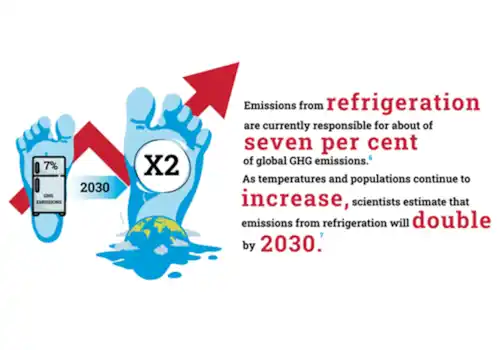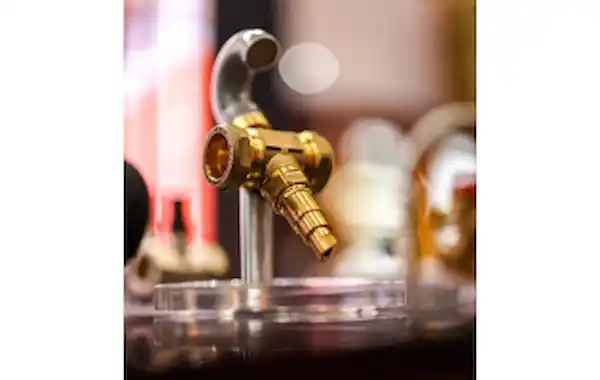22 October 2025
|
As heat pump adoption gathers pace across the UK, freeze protection has become more than just a seasonal concern - it’s now a year-round priority for installers. While the threat of freezing heat pumps may feel distant in warmer months, system reliability must be considered from the outset of every installation. Neil Stead, National Specification Manager at Intatec, outlines why addressing freeze protection early is essential to long-term system performance, safety, and customer satisfaction.
Frozen pipework or components can lead to major issues, from cracked pipes and damaged valves to full system failure; often resulting in costly repairs, callouts, and unnecessary downtime. These problems not only affect the homeowner but can also undermine trust in low-carbon heating technologies at a time when confidence in heat pumps is key to wider adoption.
In line with this, recent updates to the MCS Heat Pump Best Practice Guide and changes to UK Building Regulations have confirmed what many in the trade already recognise: freeze protection is no longer an optional extra. It has become a core element of best practice in professional heat pump installation.
Anti-freeze protection isn’t just a winter task - it’s a crucial part of heat pump design that should be considered all year round. By addressing it at the installation stage, installers can avoid costly callouts and system failures when temperatures drop and demand for emergency repairs spikes. Getting it right early means peace of mind for both the homeowner and the installer when winter hits.
The challenges with traditional freeze protection methods
Freezing occurs when water in external pipework drops below a critical temperature, usually around 3°C. Traditional solutions have often relied on ambient air temperature sensors to trigger a response, but this method can be unreliable.
It frequently results in premature discharge, wasting water unnecessarily, or worse, delayed activation that leaves systems exposed when it matters most. The future of anti-freeze valve technology lies in precision. Best practice now favours valves that respond directly to system water temperature. This targeted approach ensures discharge only happens when truly needed, preserving system pressure, avoiding nuisance drainage, and reducing wear on components.
Smarter valves for a smarter future
This level of precision is especially important as more systems are installed using R290 refrigerant. Praised for its low environmental impact and high efficiency, R290 is also flammable, meaning all system components must meet stricter safety standards.
In these systems, even small fluctuations in pressure or temperature can affect performance and safety. That’s why freeze protection valves must operate predictably and only activate when genuinely needed. Valves that respond to system water temperature - rather than ambient air - reduce the risk of false activations, help maintain stable system conditions, and minimise unnecessary intervention. For installers, this ensures safer, more compliant systems and fewer callouts in colder months.
Installation challenges: Insulation and drainage
Insulation and drainage are two further considerations that are often overlooked. Under Part L of the Building Regulations, external pipework must be fully insulated to meet energy efficiency targets. However, not all anti-freeze valves are designed to function properly when insulated.
This creates a challenge for installers, who must balance regulatory compliance with operational reliability. It’s essential to select components that are independently tested and proven to work effectively even when enclosed in insulation. This ensures freeze protection doesn’t become compromised in pursuit of meeting another standard.
At the same time, water discharged from freeze protection valves must be directed appropriately. Ice forming on driveways, footpaths or public access areas presents a real hazard, so drainage must be part of the design process from the start. Soakaways or dedicated discharge points should be factored into every installation, whether domestic or commercial.
Planning for exposure and longevity
Outdoor conditions present yet another challenge. Valves positioned externally are exposed to dirt, leaves, and debris - all of which can hinder performance or block mechanisms. Opting for models with self-cleaning functions or built-in debris protection can make a real difference, particularly for systems located in wooded or exposed areas.
Fortunately, the market has responded to these needs. A new generation of anti-freeze valves has emerged, featuring direct water sensing, improved seals, insulation compatibility, and anti-blockage technology. Products such as the Inta Zero Anti-Freeze Valve are leading this evolution, combining practical features with installer-friendly designs that no other anti-freeze valves have - helping reduce callbacks, extend system life, and meet regulatory demands without overcomplicating the job.
The Inta Zero Anti-Freeze Valve offers smart, reliable protection by activating only at 3°C system water temperature. Built for durability, it’s fully tested for insulated systems and compatible with high-temperature R290 heat pumps. With a zero-drip outlet to prevent ice plugs and optional Zero-Guard for added protection, it delivers reliable freeze defence without compromise.
The small detail that makes a big difference
Ultimately, while freeze protection may seem like a small technical detail, it carries far greater significance than many realise. A single frozen pipe or component failure can compromise an entire system, leading to costly repairs, downtime, and dissatisfied customers. For installers, that risk extends beyond the immediate call-out: it can impact their professional reputation, undermine customer trust, and result in lost future business.
As the heating industry raises its standards and embraces more advanced, sustainable heat pump technologies, attention to details like freeze protection will increasingly distinguish good installations from truly great ones. These are the systems that not only perform as expected on day one but continue to operate reliably and efficiently through years of changing weather conditions. By incorporating freeze protection into every project from the design stage onwards, installers demonstrate foresight, technical expertise, and a commitment to long-term customer satisfaction. With careful planning, the right choice of components, and adherence to recognised best practice, systems can be delivered that are not only fully compliant with regulations but also robust, efficient, and genuinely future-ready.
In other words, freeze protection is not simply about avoiding problems in winter - it is about ensuring year-round resilience, supporting the credibility of the installer, and building confidence in heat pump technology as the UK moves towards a low carbon future.
www.intatec.co.uk








